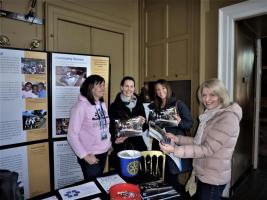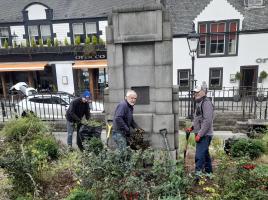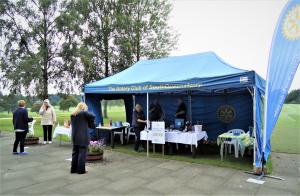Club Meeting
Thu, Jun 10th 2021 at 7:00 pm - 9:00 pm
Speaker: Ed Kelly: Snapshots of Queensferry,
Raffle: Sandy Mackenzie,
Reception: Lorna Prentice / Derek Clark,
Zoom Meeting
The speaker at the virtual meeting of the Rotary Club of South Queensferry on Thursday 10th June was long-standing club member Ed Kelly. His subject was the History of Queensferry from Neolithic times to the present day. In Echline fields, on the southern edge of modern Queensferry, flint arrowheads and animal bones thought to date from 8,300 BC were discovered. There were also traces of primitive fireplaces. Remnants of a stone fort were found in Gospatrick gardens and traces of a Roman camp have also been found. Dating from around 208 - 211, it was built to house forty-thousand men who planned to cross the Forth on a bridge of boats to attack the Scottish tribes in the north. Ed reckons about 339 boats would have been needed for the plan to succeed. Inchgarvie, the island which now forms the base for the southern cantilever of the Forth Bridge, was owned by the Dundas family. It had a small castle from which they collected tolls from ships in the Forth. it was later a prison and then fitted with emplacements for the Garrison Artillery. In 1878 it was bought by the Forth Bridge Company at the start of the Forth Rail Bridge project. Tradition has it Queensferry got its name from a ferry established by Queen Margaret (1069 - 93) to take pilgrims over the Forth. There's no evidence of this, but she may have improved and reorganised the ferry services that had existed here for years before, simply because it is the narrowest point in the lower reaches of the river. The three landings used by early ferries were Sealscraig, Port Neuk and The Binks. On the coast east of Queensferry near present day Hound Point Oil Terminal is Barnbougle Castle, the original seat of the de Moubray family. It is situated on Dalmeny Estate, which now belongs to Lord Rosebery. Dundas Castle is situated in Dundas Estate to the south of the town. It is owned by Sir Jack Stewart Clark and has the mediaeval keep, a chapel, a splendid Georgian mansion and once even a distillery. Black Castle in Queensferry High Street, which is not a castle, but a seventeenth-century house, was owned by coal merchants. Queensferry was known in the seventeenth-century for with trials. Several prominent families, including the Melvilles, were involved in the persecution.
Ed Kelly's well-illustrated talk proved of great interest to members and guests viewing on Zoom.
'What We Do' Main Pages:

We support Shelter Box, other international charities especially those working on relief after natural disaster.
more





